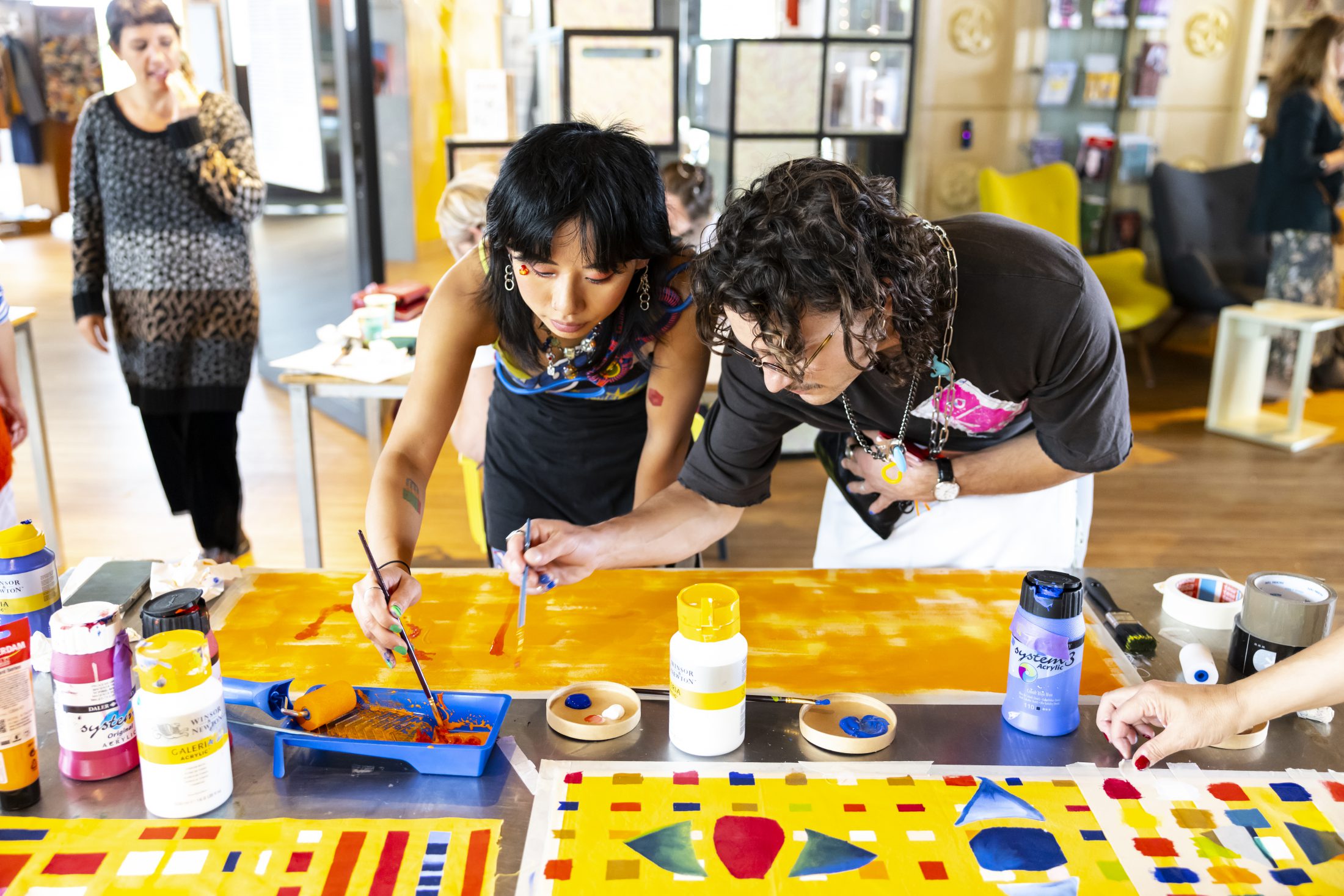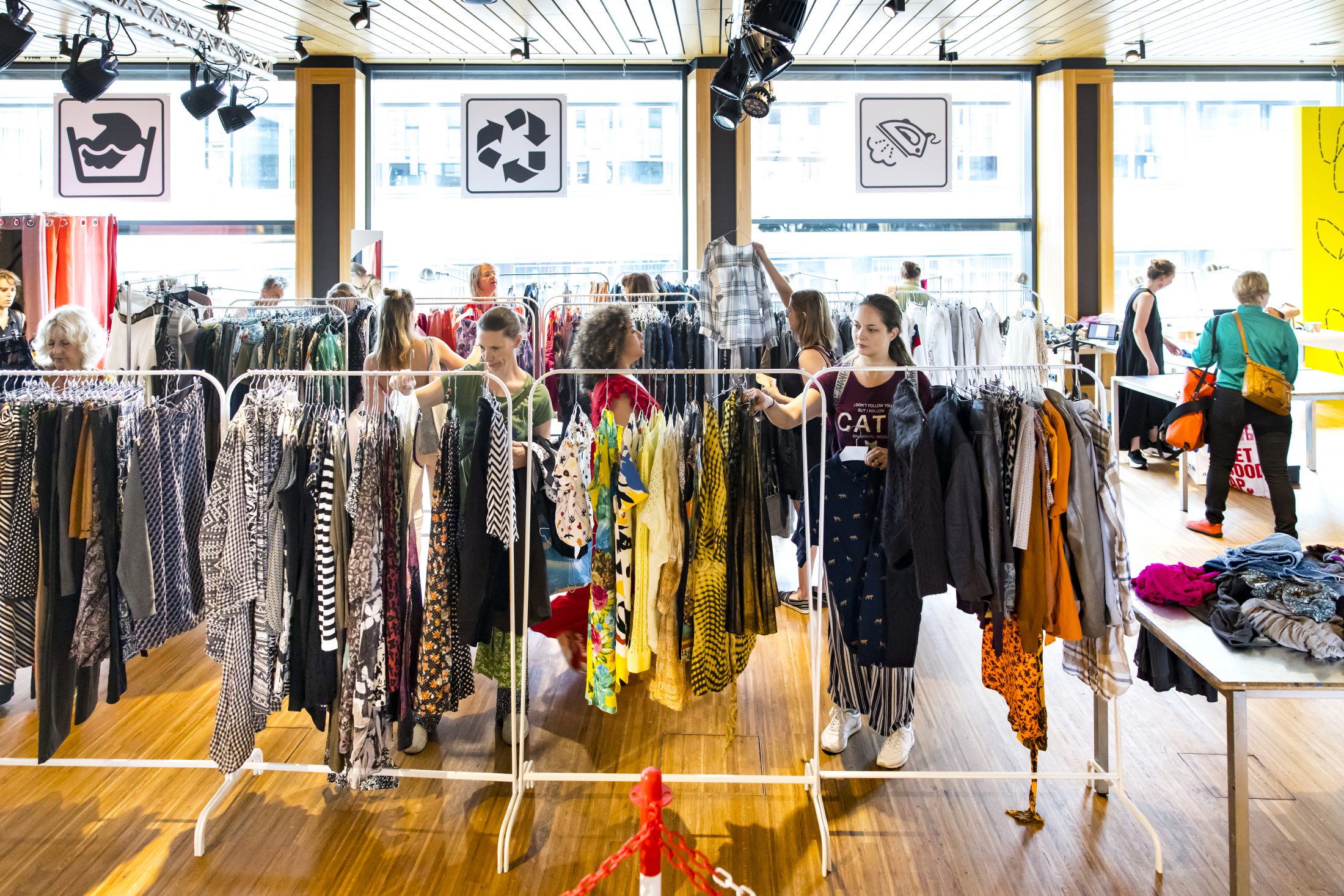We know that a fundamental system change is required if we are to improve the fashion industry. The task of changing this industrial system, which is so deeply dependent on the exploitation of people and planet, is a daunting one. If we view our wardrobes as the point of departure for this exceptionally complex system, we can make a start.
In the intervention Walk-in Wardrobes, we encouraged individual and collective acts of repair and restoration: from mending clothes to repairing dysfunctional systems. Exchanging, sharing, lending, upcycling and reusing become acts of resistance against a system that is designed for obsolescence and waste. As Marina Spadafora, the ambassador of fair fashion, wisely states: “The revolution begins in the wardrobe!”

With the Walk-in Wardrobes, we examined the notion of citizen possession by making use of existing systems for exchanging or swapping clothes in order to test various methods of non-monetary exchange of clothing. What if we no longer view clothing as something we buy and possess, but as something we want to care for before passing it on to the next wearer? These wardrobes celebrate items of clothing as milestones of lived lives and position them as transitional objects from one wearer to the next. In this respect, we did not limit ourselves to an exchange of clothing but to the sharing of knowledge – from techniques of mending and altering to washing and maintaining – in order to build up an alternative fashion economy in which items of clothing remain in circulation for as long as possible.


Important partners in this programme were – in addition to the participating local designers, makers and the international designers (such as Garcia Bello, Cedric Mizero and SOUP Archive) – the clothing library initiative Outfit Library LESS and textile collector 2 Switch. Using the clothing donations of the latter, we were able to set up a test site for a clothing library system for Arnhem during the Biennale. The items of clothing were repaired, redesigned, upcycled and transformed before being brought back into circulation through the 2Switch shop in Arnhem. So, if you now visit 2Switch, you might come across an upcycled gem by one of the designers of the Walk-in Wardrobes, or an item repaired with love by your neighbours. The most important result of this programme element is that there is now a proposal for a permanent clothing library for the city, in collaboration with the above-mentioned partners.